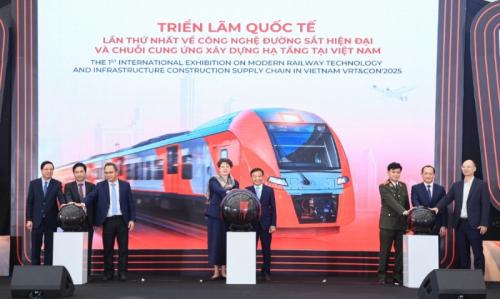Vietnam likely to lift power offtake guarantee for LNG-to-power projects to 75%, for up to 15 years
The Vietnamese government has proposed increasing the power offtake guarantee for LNG-to-power projects to at least 75% of annual output for up to 15 years.
The proposal was included in a new government report submitted to the National Assembly’s Standing Committee regarding issuance of a resolution on removing obstables for 2026-2030 national renewable energy development.
Accordingly, state utility Electricity of Vietnam (EVN) would be required to commit to purchasing no less than 75% of a project’s average annual power generation, up from the current 65% threshold under Decree 100.
Decree 100/2025/ND-CP amends and supplements a number of articles of Decree 56/2025/ND-CP, related to the mechanism for developing gas-fired thermal power projects.
The guaranteed purchase period would last through the loan repayment phase, capped at 15 years from the project’s commercial operation date - five years more compared to Decree 100.
The move aims to strengthen financial certainty for investors in LNG-to-power projects, which are seen as crucial base-load sources to stabilize electricity supply and support Vietnam’s renewable energy transition.
Vietnam’s revised Power Development Plan VIII (PDP8) targets up to 37,500 MW of new gas-fired capacity by 2030, of which about 22,500 MW will use imported LNG - an increase of roughly 7,000 MW from earlier plans.
Developers have repeatedly urged the government to raise the guaranteed offtake ratio and extend contract durations to 20-25 years to ensure stable cash flows and debt repayment.
The Ministry of Industry and Trade (MoIT) backed the need for a special mechanism, noting that long-term offtake commitments are key to securing project financing.
However, higher guaranteed purchases could raise risks of increasing retail electricity prices, as the cost of LNG-based generation remains higher than that of domestic coal or hydropower due to imported fuel prices.
Earlier, VinEnergo - an energy company controlled by Vingroup chairman Pham Nhat Vuong - had given comments on the MoIT proposal on an offtake of no less than 75% of the average annual electricity output for LNG-to-power projects.
While agreeing with the 75% minimum offtake rate, the firm proposed extending the term to up to 25 years for projects entering commercial operation between January 1, 2030 and December 31, 2031.
For projects that begin operations earlier, from January 1, 2026 to December 31, 2029, VinEnergo suggested a minimum offtake rate of no less than 90%, also applied over a debt repayment period of up to 25 years.
The Hanoi-based VinEnergo was established in March 2025. Its core business is in electricity generation and electrical equipment manufacturing. Billionaire Pham Nhat Vuong - Vietnam's richest man by stock market assets - holds 71% of the shares; his eldest son, Pham Nhat Quan Anh, 5%; and his second son, Pham Nhat Minh Hoang, 5%. The remaining 19% is owned by Vingroup.
Source: Bach Quang
Photo: Photo courtesy of Trungnam Group





